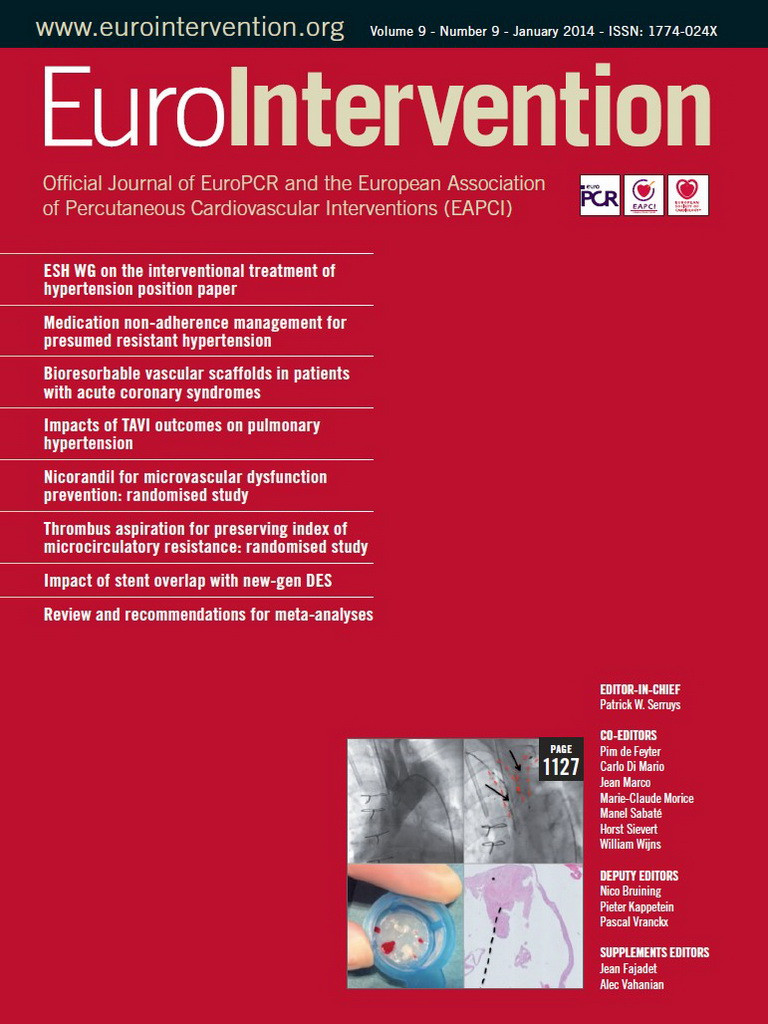At last month’s ICI meeting in Tel Aviv, Israel, we were treated to a sneak preview of what the future in interventional cardiology could be. Rafael Beyar and Chaim Lotan, as course directors, presided over a dynamic meeting in which interventional cardiologists, innovators and industry participated in vibrant presentations based on innovative technologies. I have had the pleasure and the honour of being involved in this meeting for many years and, to be honest, it is one of my favourites on the congress circuit.
What makes this annual meeting particularly significant is the parade of new technologies. This year more than 15 innovations were presented, including e-CRFs, new polymers for stent coatings, cooling techniques during interventions, valvular interventions and new technologies for stroke treatment.
It was at this meeting four years ago that an abstract introduced the basic concept of renal denervation, and from this came the development and creation of interventional devices. Within a few short years, the much broader topic of resistant hypertension has developed with the collaboration of not only interventionalists but also hypertension experts. This collaboration led to the first Resistant Hypertension Course in Berlin last year, endorsed by both the European Association of Percutaneous Cardiovascular Interventions (EAPCI) and the European Society of Hypertension (ESH). An Asian version of this meeting was held last November. EuroIntervention has followed the resistant hypertension developments quite closely with papers published regularly in the journal and also a dedicated resistant hypertension supplement publication last year. EuroIntervention’s first issue in 2014 starts off strongly with the important publication of the ESH WG on the interventional treatment of hypertension position paper for renal denervation1, and a paper (which should interest also the hypertension experts) from Sabina De Geest’s group on medication adherence2, a specific but all too important aspect in the decision-making process for an eventual intervention in this patient group.
Coming back to ICI, Stephen Oesterle (Medtronic) presented some thought-provoking slides, with one in particular which has vast implications for innovations. He told us that over four billion people are “underserved” when seeking health care, compared to the one billion who receive “premium care” and another one billion who receive “value care”. He and Peter Fitzgerald are advocates of “connected healthcare”, a term coined to express the potential of digital healthcare reaching patients with limited access due to their geographical position, particularly in Asia and Africa, but a term that could also be used to exploit fully current and forthcoming digital innovations, such as the potential of using credit-card-type algorithms being applied for healthcare predictive analytics. Of course, recent concerns regarding the safety and integrity of digital data come to mind, illustrating the many obstacles that innovators must address in order to succeed.
Other aspects innovators undoubtedly meet are the complications that can arise which may eventually block further development: a very good example is the CONOR stent. This was a very exciting device, and one that over the course of several years, put in place a series of improvements for the issues that occurred during development, only to ultimately fail. In the current financial environment, another aspect is the financial mismatch, i.e., insufficient investment to match the potential of the innovation.
“Innovations” are novel ideas or methods that “impact on daily practice”. EuroIntervention will highlight and discuss both of these more frequently in the journal. The 56,000 subscribers on the database will have seen the launch of the new “Innovation” logo with last month’s EEP3 and, in selected papers in this month’s issue, the “Impact on daily practice” has been evaluated by the authors.
With this mind, we look forward to what this year will bring us in this exciting world of “Innovations, inventions and improvements”.

